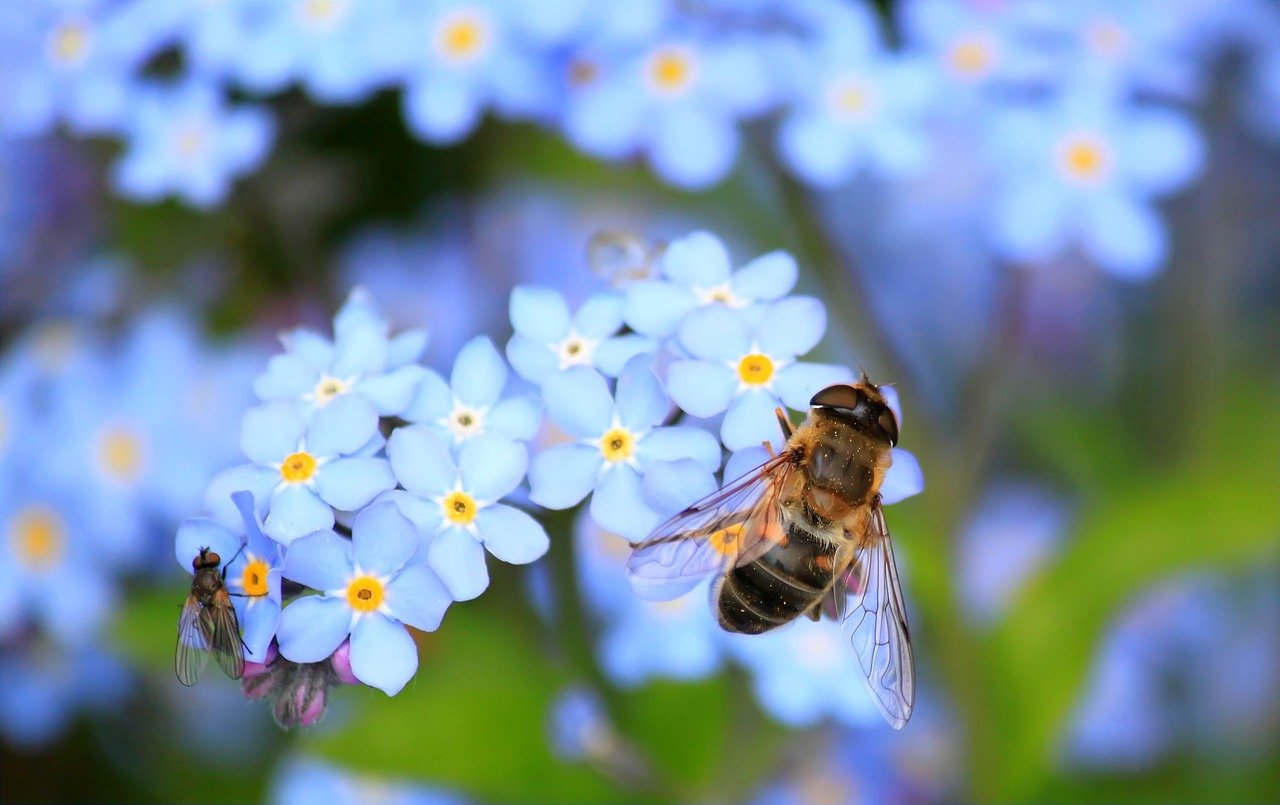Bees need to protected at all costs. Which electric wasp traps save beneficial insects from harm?
Electric fly trap despite impending nearing extinction of bees?
In our online shop we not only offer highly efficient electric wasp traps and insect killers that operate with pheromones or glueboards. Due to the rampant dwindling of beneficial insects we want to emphasise the crucial role they play in pollination of plants and introduce you to alternative live traps that work just as well.Contents:
- Extinction of insects and birds
- Live traps protect both humans and insects
Extinction of insects and birds
- Clothianidin
- Imidacloprid
- Thiamethoxam

How you can contribute to protection of bees:
- Variety of blooming plants instead of a garden entirely covered with grass
- Plants can even grow on shady window sills
- Provide insect hotels or dead wood for nesting and hibernating in the winter
- Pay attention to empty blossoms: some cultured plants offer neither nectar nor pollen
- Patios with gravel instead of concrete
- Let some areas grow without moving
- Do not use chemical pesticides like neonicotinoids and glyphosat
- UV wasp killers are forbidden / should not be used outdoors
- Set up live traps against mosquitos and the likes inside the house, let beneficial insects go at the end of the day / night
- Purchase organic fruit and vegetables coming from sustainable farming
- Get active and become involved with politics
Live traps protect both humans and insects
It is not just insecticides and herbicides applied on a large scale that give pollinators a hard time. Concrete cities, monocultures and dwindling open landscapes with wild flowers narrow down food supply, places to nest and hibernate. On top of that, bakeries, ice cream parlours, pubs and restaurants often use electric wasp traps to deal with pests. However, those traps do not differentiate between harmful and useful insects, meaning bees and bumblebees also end up on electrically-charged killing grids and glueboards.Certainly though guidelines and laws concerning food hygiene must be respected in professional environments. Flying insects can come into contact with bacteria and virus and pass it on to foodstuffs, resulting in salmonella and other infections. Particularly people with weaker immune systems are affected easily, especially children and elderly. That is why it is important to find a happy medium between wildlife conservation and food hygiene. On top of causing problems with hygiene, flying insects are simply annoying. Mosquitos bite, wasps sting, fruit flies buzz around in dozens. Nobody wants them in the living room, kitchen or bedroom. Even peaceful clothes and flour moths can cause damage even though they do not sting or bite.
Before you purchase a device to protect you from insects, e.g. a flykiller, you should ask yourself how beneficial insects like bumblebees, butterflies and bees can be protected. Ladybeetles and other useful species also find their way into homes. As mentioned in the first section, their numbers have decreased significantly over the last years alone. A great alternative for use at home are flyscreens, but those items are only used on windows and doors. In situations where food is displayed on counters it is rather obstructive to use flyscreens and nets since they would mostly be in the way and affect work routine.
At the moment only few people know about the benefits of live insect traps. The INSECTIVORO by Mo-El covers up to 180 m2. The complete device has dimensions of 245 x 340 x 220 mm (W x H x D) and is big enough for butterflies, bugs, crickets, etc. but small enough to not appear to obtrusive in the room. The fine-meshed protective grill on the back side of the catch tank also keeps small insects such as fruit flies inside. Even once the fan is turned off caught insects cannot escape. Through the mesh you can see which animals have been caught. Honeybees and other useful animals should be let out into the wilderness as soon as possible. To do so, bring the tank to a suitable location, open it and leave quickly. This absolutely harmless even if wasps are involved, provided you are being careful. After a few minutes all insects should have flown away and you can bring the empty container back into the house. Naturally, you can also empty the container on the window. Simply leave the container on the outer part of the ledge.
Introducing INSECTIVORO
- Free from chemicals
- Application: food industry, commercial and domestic environments
- Insects stay alive inside the tray provided the tray is emptied in a timely manner
- Ideal for counters, conservatories, greenhouses, etc.
- Delivery includes UV lamps
- Easily cleaned with water
Note the following:
Non-selective insect traps with UV light must only be applied indoors due to their attracting effect. In the garden these artificial light sources would unnecessarily attract beneficial insects like bees.What can you do outdoors? It is possible to catch insects outdoors without killing them. Learn more in our "blog".
Pictures:
pixabay.com


